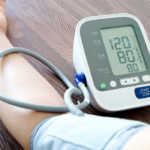I’ve worked as an oncology nurse for over 7 years. Some of my most stressful days were alleviated by brief animal visits from pet therapy organizations that volunteered their services to patients. It makes sense since animals can provide a sense of livelihood, companionship, and assistance to the chronically ill and disabled populations. But pet therapy isn’t only for patients. It’s for nurses too; so, I take advantage every time. In fact, studies have shown that nurses have a statistically significant decrease in stress after animal-assisted therapy (1).
Regardless, I think it’s safe to say that anyone can benefit from some form of pet therapy. So, I want to share reasons why you need animals in your life when you have endometriosis. Basically, I think it’s important to realize that pet therapy is a wonderful complementary and alternative therapy for every endo warrior’s physical and psychosocial needs.
A little background . . .
The idea for this post started a few weeks ago when my husband and I laid to rest our 13-year-old Beagle Daisy. I’m still grieving, and I’m sure I always will be. But ultimately, I want to honor her, my other fur daughters, and the many fur babies that provide endometriosis warriors love, solace and peace. If you have a pet then you understand the profound and unconditional love that they give, especially in times of pain and suffering. So here is to them. *Cheers*
This post is also being done in collaboration with the Endometriosis Foundation of Houston, who is sharing some more benefits of getting a pet when you have endometriosis. Check out the collaboration by visiting their blog post.

Why You Need Animals in Your Life
1. They reduce loneliness and provide companionship.
If you have endometriosis, then you probably know that the disease can feel very isolating. Days spent in bed, on the floor, and/or at home add to the desolation, as you see family and friends continuing with life. So, it seems obvious that having a pet can help fill that void, while also providing unconditional love and support.
Not only do they provide the unconditional love, but they can foster trusting relationships between humans and animals; something that is hard to foster in human-to-human relationships when you have a chronic illness. Reaching a point of complete trust with a human companion takes time and work. But with an animal, reaching a point of mutual trust takes significantly less time.
All four images above of Rocko, dog of Jennifer Starkey.
2. They help improve vital signs and decrease the need for medications.
 Tactile comfort from petting/stroking a pet’s fur has been shown to reduce heart rate, blood pressure, and respiratory rate (2). Heart disease and hypertension (high blood pressure) are the source of many deaths in America, and often require medication management. If these diagnoses affect you, it may be beneficial to have an animal at home waiting for your arrival after a long and stressful workday.
Tactile comfort from petting/stroking a pet’s fur has been shown to reduce heart rate, blood pressure, and respiratory rate (2). Heart disease and hypertension (high blood pressure) are the source of many deaths in America, and often require medication management. If these diagnoses affect you, it may be beneficial to have an animal at home waiting for your arrival after a long and stressful workday.
For the endometriosis population, there are increased chances of having multiple chronic illness’ that are all poorly affected by exterior and interior stressors. Since we know that stress can increase heart rate and blood pressure, it seems wise to focus on self-care and stress relief. And if an animal can provide that for you, then why not?! But then again, I’m one to look for any excuse to get another dog.
3. They can help facilitate human interaction.
This can be tied into helping reducing loneliness, but with a slightly different approach. Having a pet can help alleviate anxiety in social settings; allowing pet owners to connect with other people and providing them with an easy topic of conversation—pets (2)!
For example, spending time at a local dog park or equestrian center can provide you with an easy way to meet people with similar interests as you. You never know, you may meet your future best friend just by frequently going to your local dog park.
From left to right (desktop)/ top to bottom (mobile):
Penny Lane, dog of MaeLauren Hudson.
Yoyo, dog of Elise Modica.
Cat, stock photo from Canva.
4. They can improve post-operative recovery.
In a small study done in a pediatric setting (PS. Endo can affect pre-pubescent children), the researchers found that early introduction of pet therapy could help with rapid recovery from anesthesia. They also saw reductions in anxiety and stress following painful procedures; and noted improvements in “physical activity, … interpersonal relationships, self-care and cardiovascular parameters” (3).
All this to say, there are clear benefits to having a pet during your immediate surgical recovery (for my endo warriors, I pray that this would be expert laparoscopic excision recovery). Though this study was done with a small pediatric population aged 3-17 years, I would dare to say that these findings would be similar in the 18+ population. In fact, one study that followed a small adult population immediately after total joint surgeries found that their perceived pain was “substantially improved” after animal-assisted therapy with a dog (4). Of course, both studies had small populations, which leaves us with the need for more studies to be done.
5. They can improve your mental health.

Pushing yourself to function while in debilitating pain can take its toll on you – physically, emotionally, and mentally. It’s unfortunately common for endo warriors to go through boughs of depression, anxiety, and even suicidal ideation when suffering from the many symptoms of endometriosis. Top that off with the gaslighting that occurs from the medical professionals who we go to for help. It’s enough to make anyone spiral out of control.
First off, if you are having trouble with any of these, please seek out help. A great resource is the Endometriosis Crisis Connection on Facebook or the National Suicide Prevention Lifeline.
But in regard to pet therapy, research has shown that animal- assisted activities can “increase self-esteem, self-determination, and [decrease psychiatric and emotional symptoms] after 8 weeks” (5). Likewise, they can increase “emotional support during mental health crisis (6).
Fish work too!
All in all, the available research articles on pet therapies have many weaknesses. However, in general, there is an acceptance that any little bit of help to quality of life is valid and worth exploring. So, if you haven’t found yourself a four-legged best friend and companion, I highly recommend it.
But even if you live in a setting where this is not an option or if you have limitations that would keep you from being able to become a four-legged pet owner, keep in mind that many landlords will accept small fish tanks. And although the research is even more limited, maintaining a fish tank and observing an aquarium may provide a sense of relaxation, decrease stress levels, improve mood, and might even positively affect your perceived pain (6).

- Machová, K., Součková, M., Procházková, R., Vaníčková, Z., & Mezian, K. (2019). Canine-Assisted Therapy Improves Well-Being in Nurses. International journal of environmental research and public health, 16(19), 3670. https://doi.org/10.3390/ijerph16193670
- Holder, T., Gruen, M. E., Roberts, D. L., Somers, T., & Bozkurt, A. (2020). A Systematic Literature Review of Animal-Assisted Interventions in Oncology (Part II): Theoretical Mechanisms and Frameworks. Integrative cancer therapies, 19, 1534735420943269. https://doi.org/10.1177/1534735420943269
- Calcaterra, V., Veggiotti, P., Palestrini, C., De Giorgis, V., Raschetti, R., Tumminelli, M., Mencherini, S., Papotti, F., Klersy, C., Albertini, R., Ostuni, S., & Pelizzo, G. (2015). Post-operative benefits of animal-assisted therapy in pediatric surgery: a randomised study. PloS one, 10(6), e0125813. https://doi.org/10.1371/journal.pone.0125813
- Harper, C. M., Dong, Y., Thornhill, T. S., Wright, J., Ready, J., Brick, G. W., & Dyer, G. (2015). Can therapy dogs improve pain and satisfaction after total joint arthroplasty? A randomized controlled trial. Clinical orthopaedics and related research, 473(1), 372–379. https://doi.org/10.1007/s11999-014-3931-0
- Bert, F., Gualano, M. R., Camussi, E., Pieve, G., Voglino, G., & Siliquini, R. (2016). Animal assisted intervention: A systematic review of benefits and risks. European journal of integrative medicine, 8(5), 695–706. https://doi.org/10.1016/j.eujim.2016.05.005
- Clements, H., Valentin, S., Jenkins, N., Rankin, J., Baker, J. S., Gee, N., Snellgrove, D., & Sloman, K. (2019). The effects of interacting with fish in aquariums on human health and well-being: A systematic review. PloS one, 14(7), e0220524. https://doi.org/10.1371/journal.pone.0220524
- Connor, K., & Miller, J. (2000). Animal-assisted therapy: An in-depth look: DCCN. Dimensions of Critical Care Nursing, 19(3), 20-6. Retrieved from https://search.proquest.com/docview/229494739?accountid=28024

